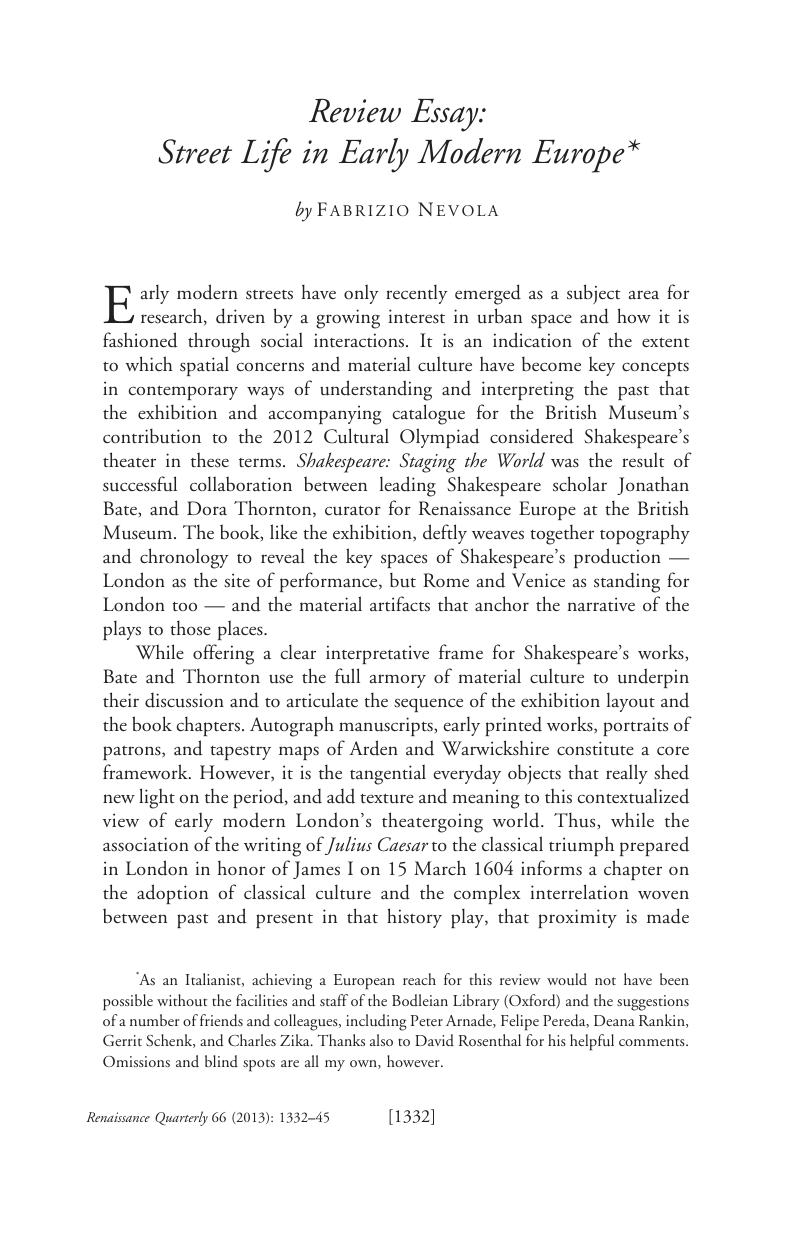Article contents
Review Essay: Street Life in Early Modern Europe*
Published online by Cambridge University Press: 20 November 2018
Abstract

- Type
- Review Article
- Information
- Copyright
- Copyright © Renaissance Society of America 2013
Footnotes
As an Italianist, achieving a European reach for this review would not have been possible without the facilities and staff of the Bodleian Library (Oxford) and the suggestions of a number of friends and colleagues, including Peter Arnade, Felipe Pereda, Deana Rankin, Gerrit Schenk, and Charles Zika. Thanks also to David Rosenthal for his helpful comments. Omissions and blind spots are all my own, however.
References
- 1
- Cited by


